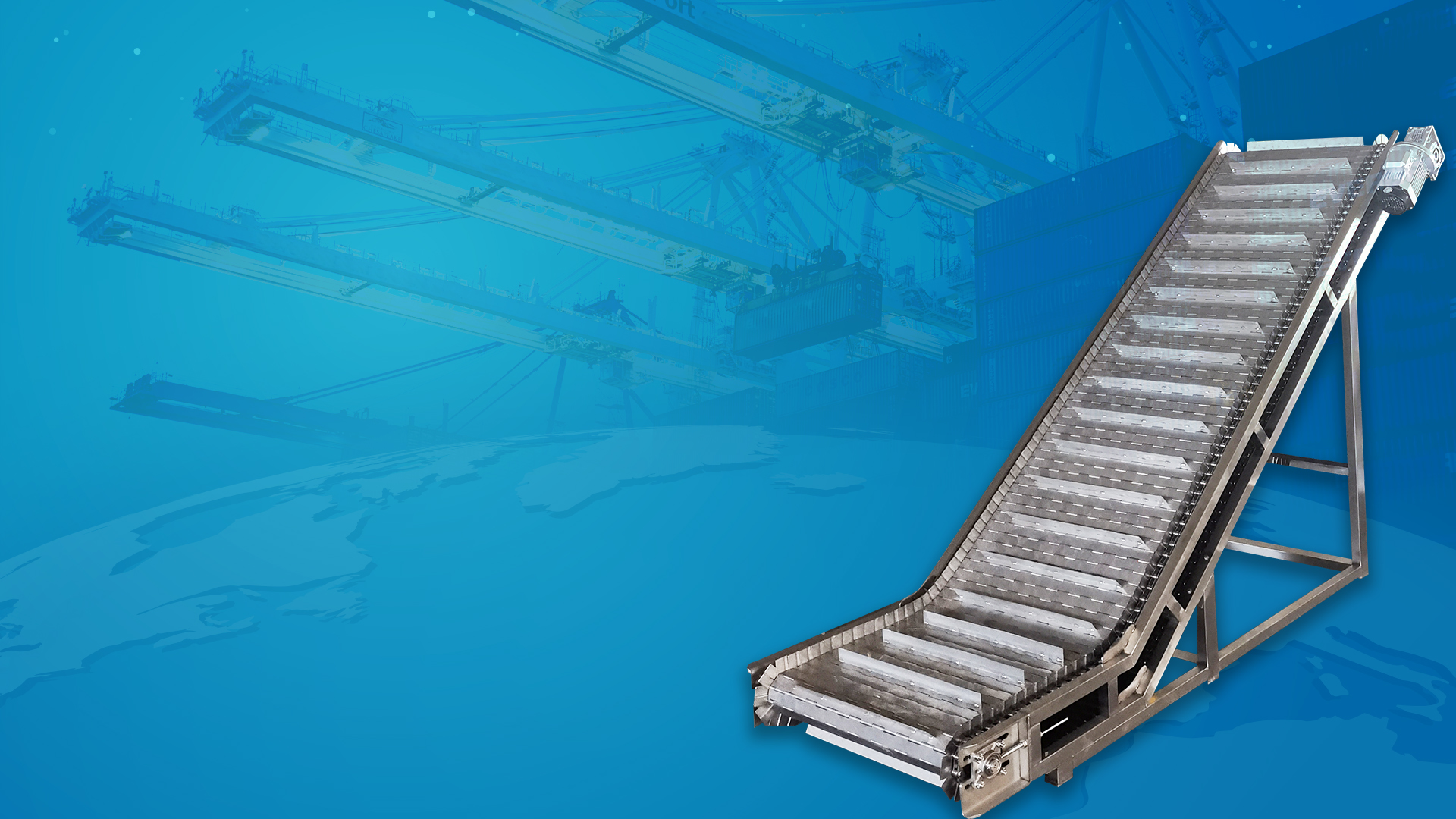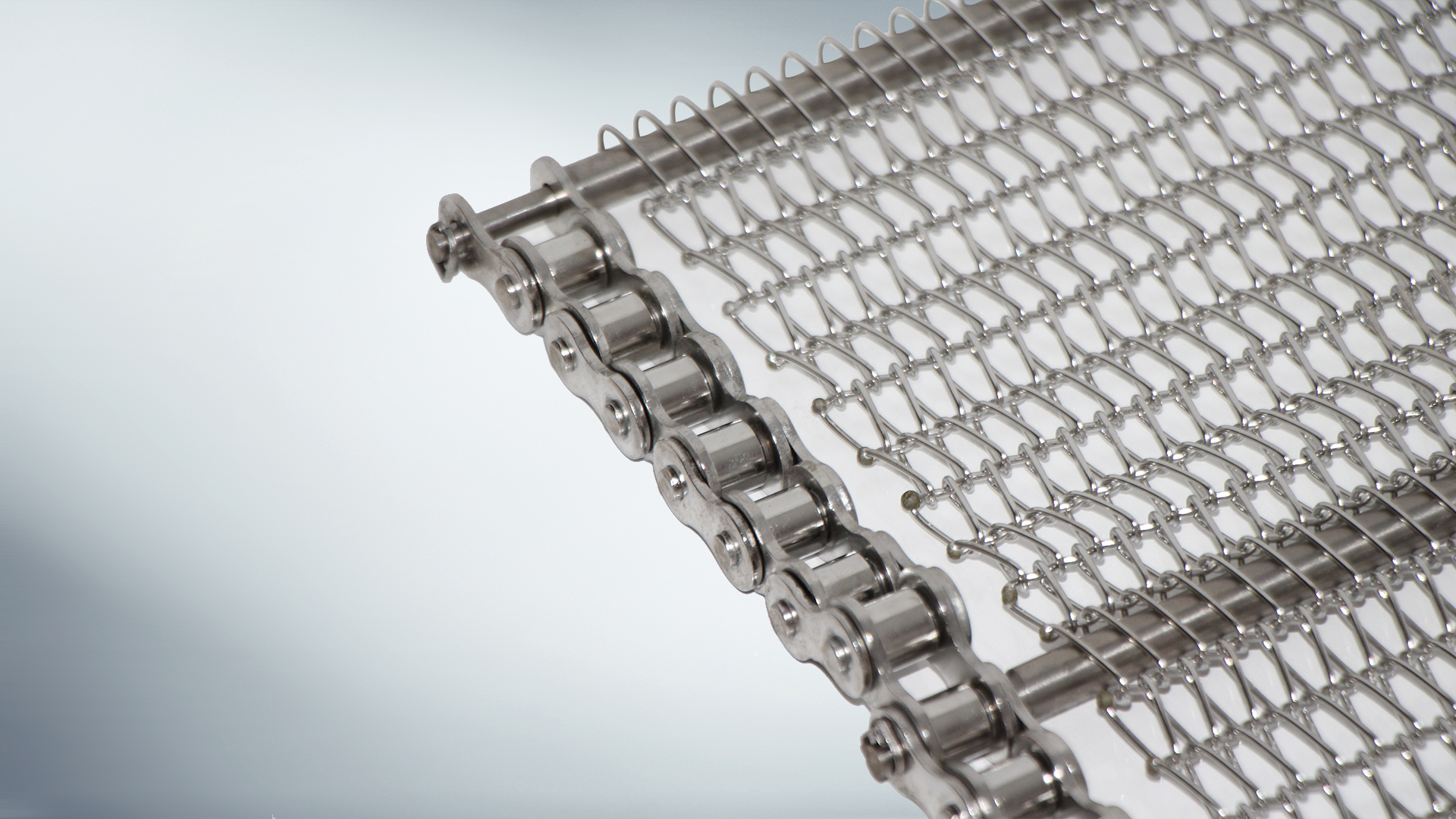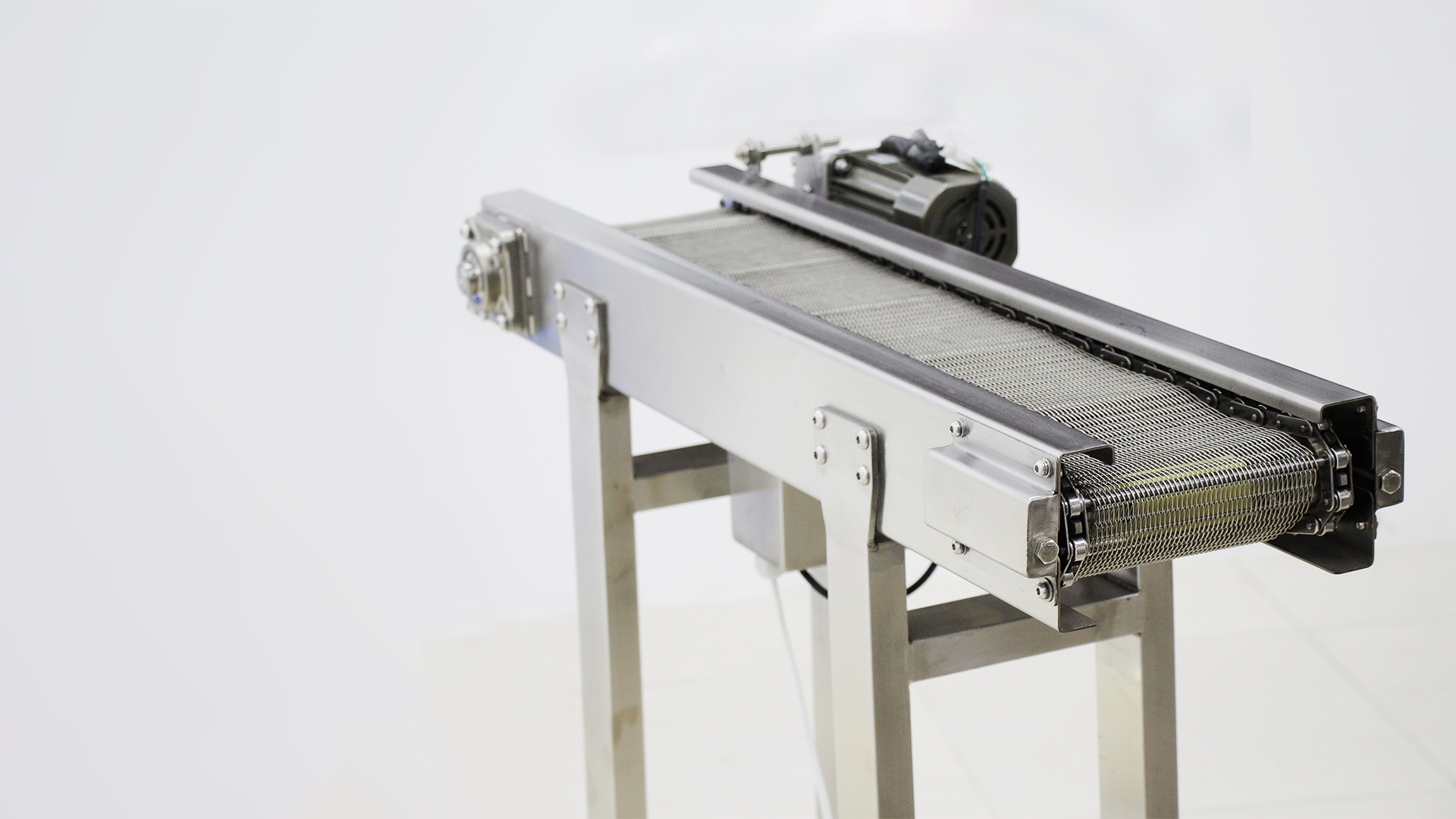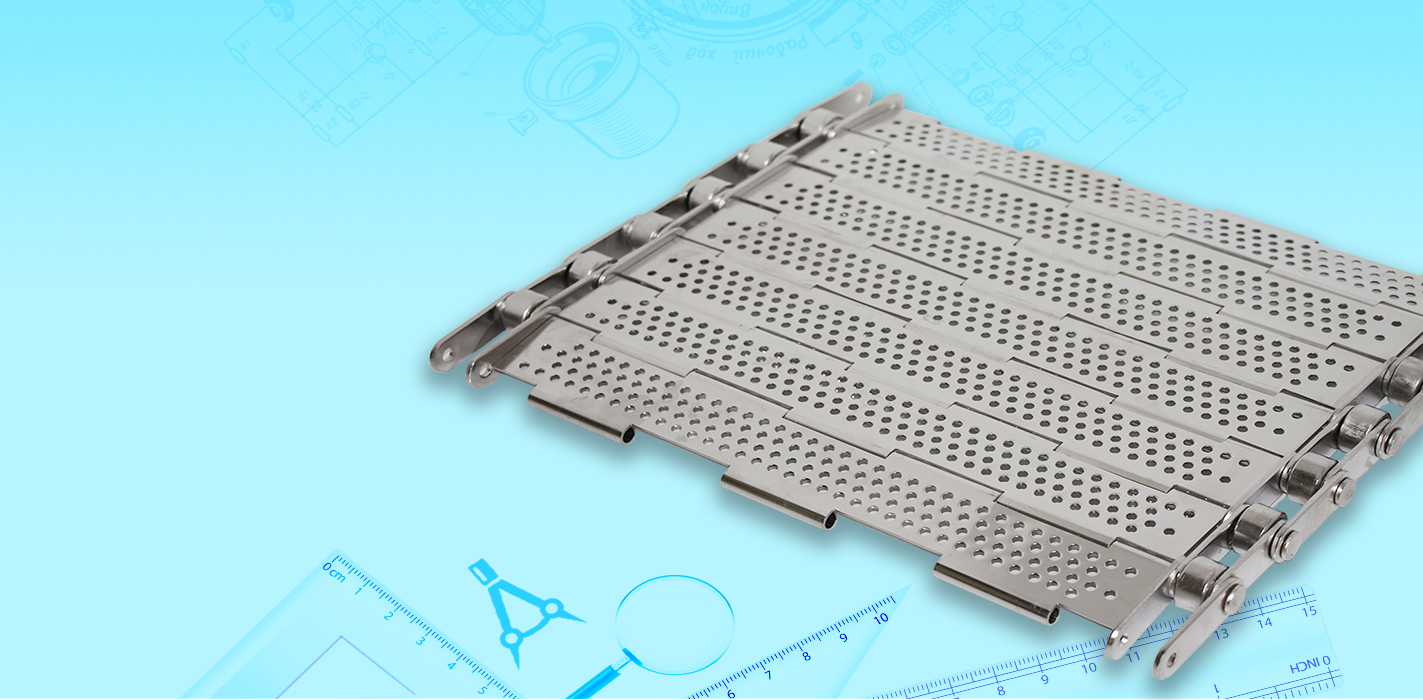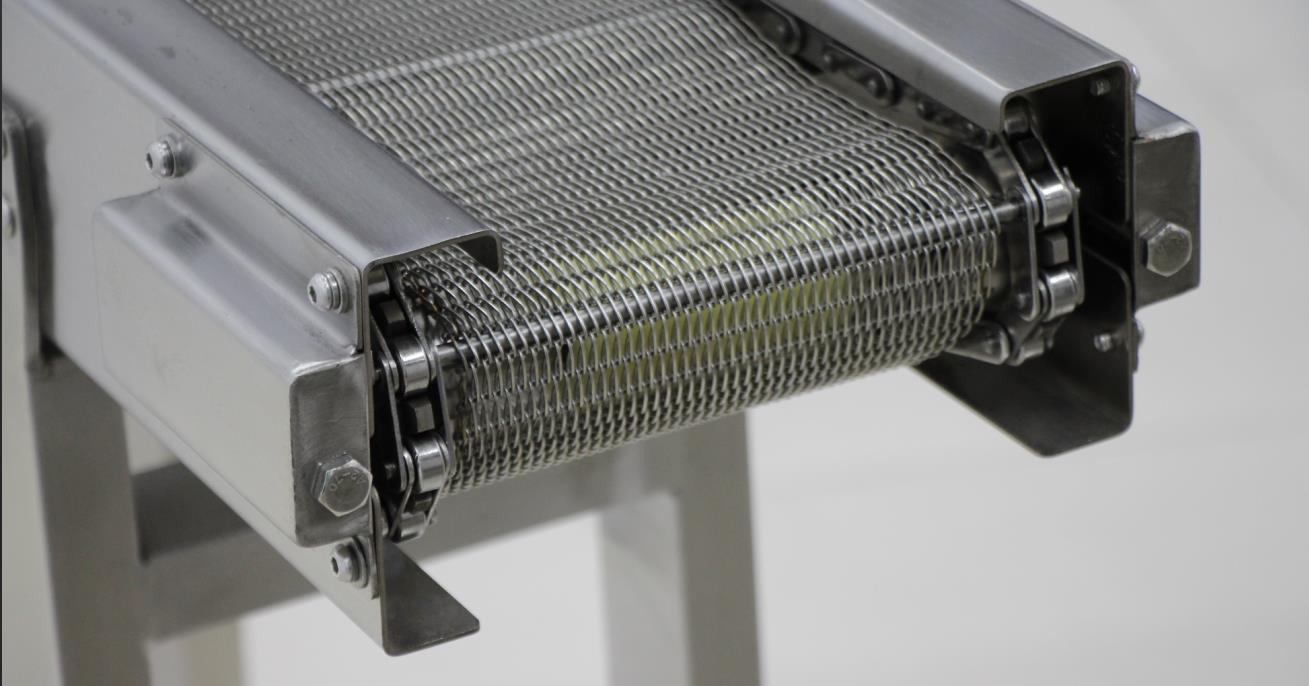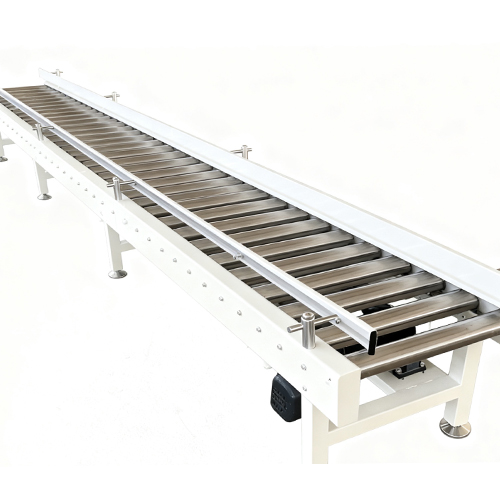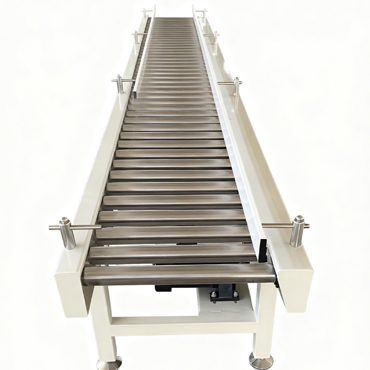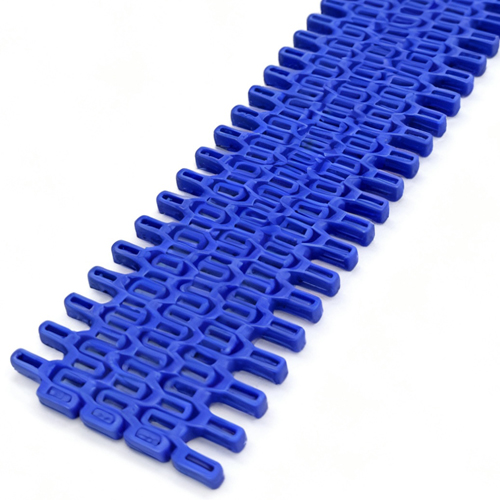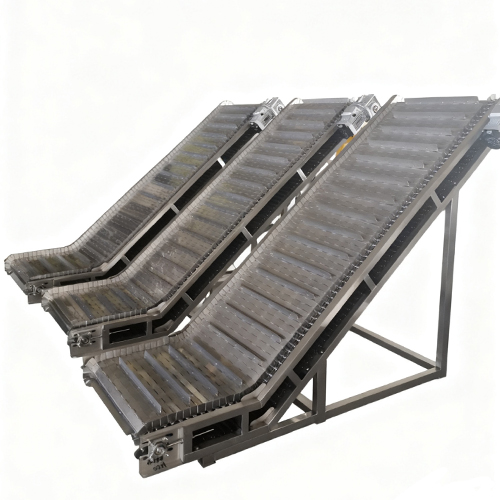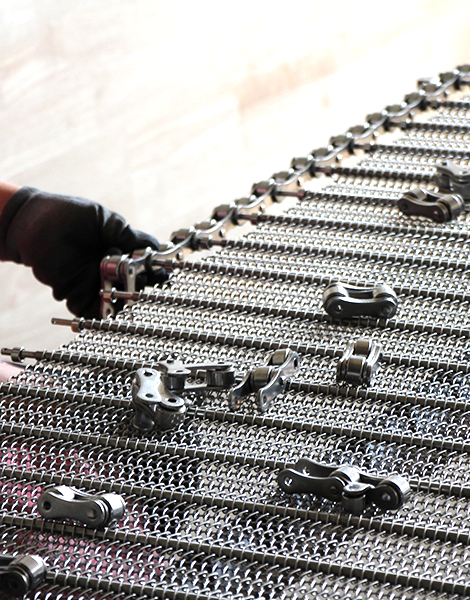Within the warehousing industry, heavy-duty chain plate conveyors are primarily configured in the following ways.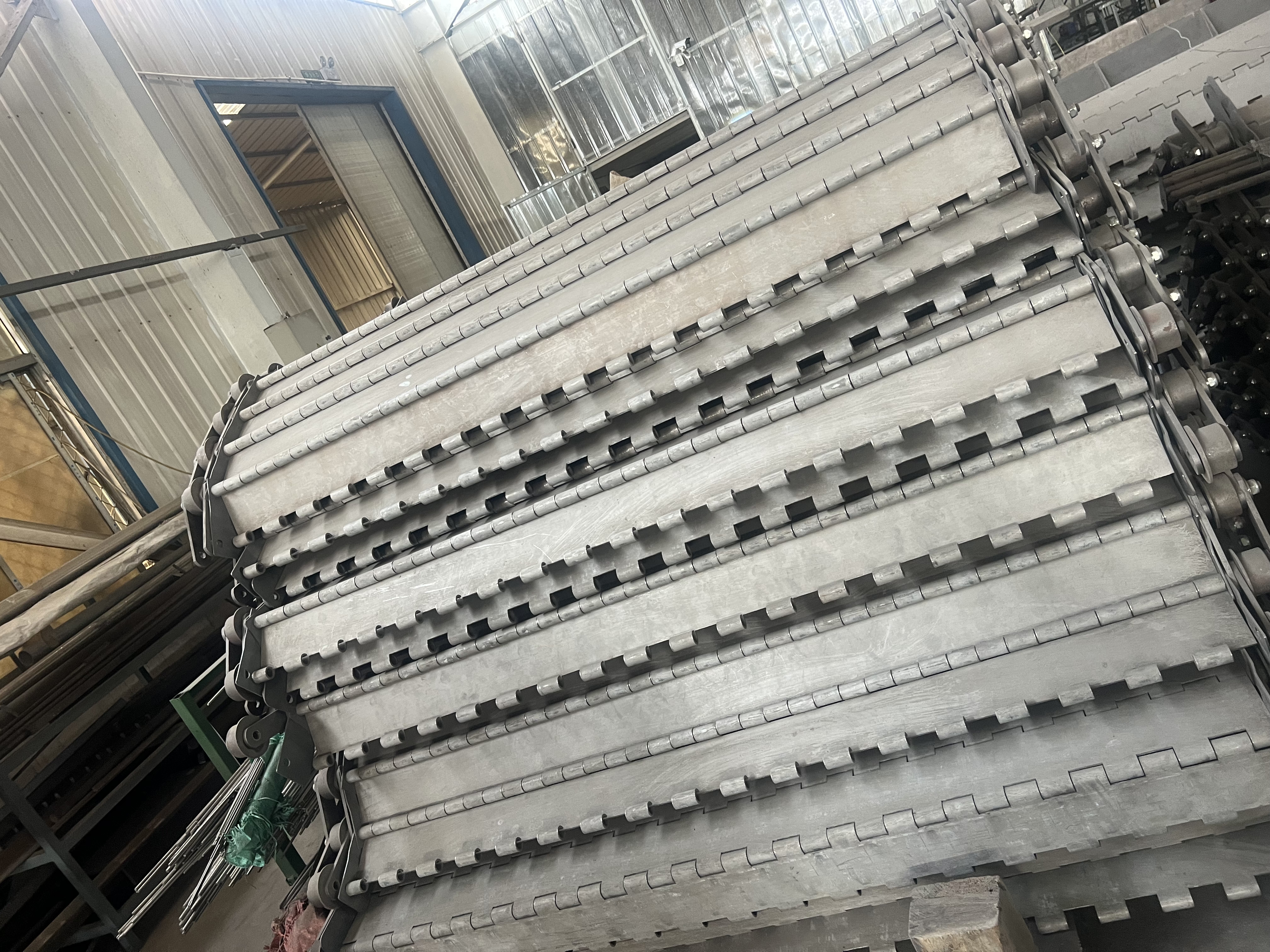
One common configuration is the straight layout, which extends along a straight line within the warehouse. Goods enter at one end and are smoothly transported along the chain plates to the other end. This layout is ideal for the continuous transportation of goods with simple processes, such as the conveyance of raw materials or finished products in large warehouses.
Circular layouts form a closed loop, enabling goods to circulate continuously along the track. This space-efficient design is ideal for areas requiring constant circulation, such as sorting centers where goods undergo continuous sorting operations on the looped conveyor.
Multi-level layouts utilize the height of the warehouse by stacking chain plate conveyors vertically. Goods on upper levels are transferred to lower conveyors via lifting mechanisms. This vertical material transfer significantly enhances warehouse space utilization and is commonly employed in automated storage and retrieval systems (AS/RS).
Other layouts include the “L-shaped” and “U-shaped” configurations. The L-shaped layout is suitable for scenarios requiring transportation and sorting of goods in a warehouse corner, and the U-shaped layout creates a circular conveying path in the warehouse's central area, facilitating the centralized processing and distribution of goods. The optimal layout is selected based on specific storage requirements, spatial constraints, and cargo characteristics to maximize operational efficiency and convenience.



